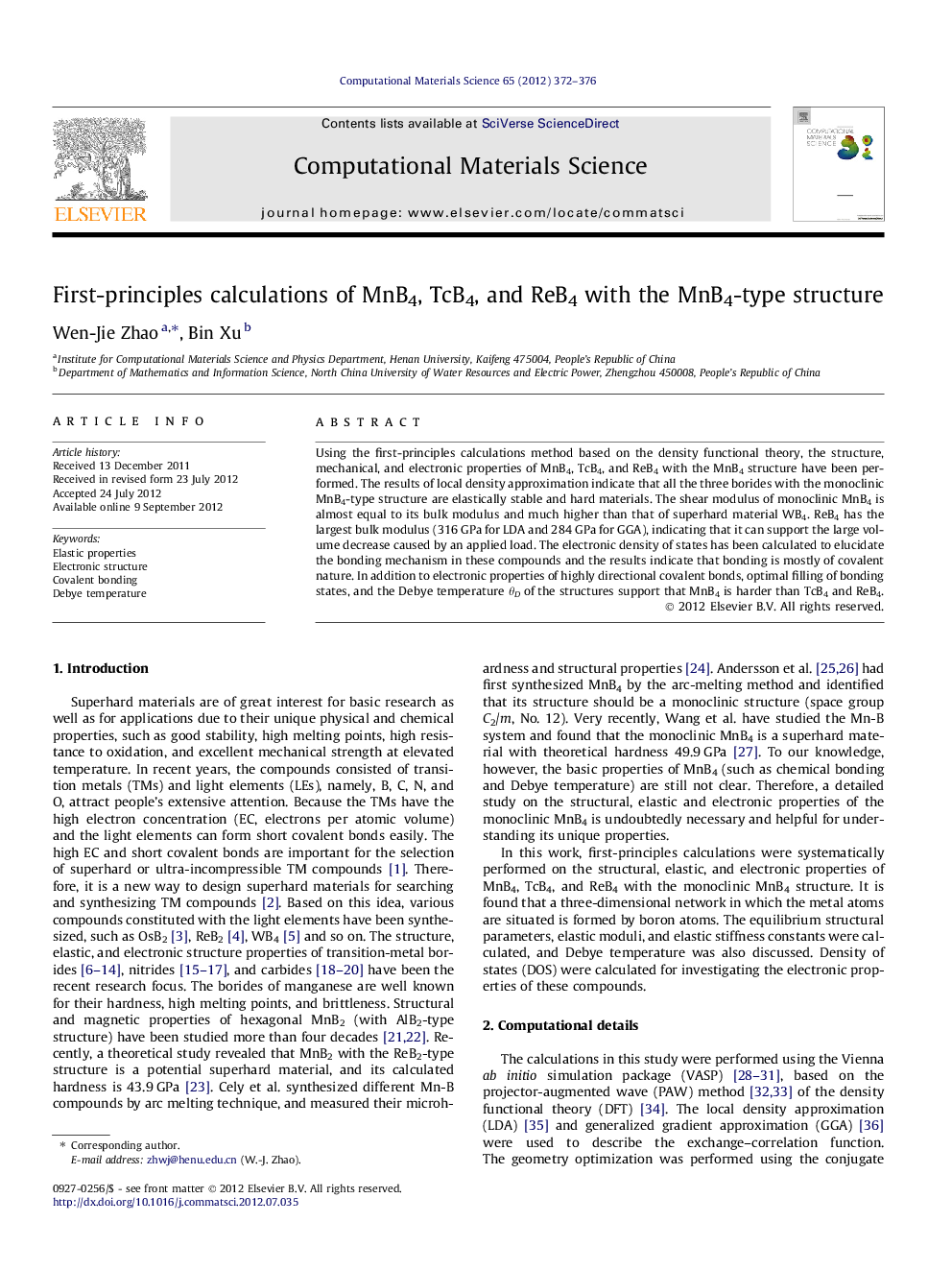| کد مقاله | کد نشریه | سال انتشار | مقاله انگلیسی | نسخه تمام متن |
|---|---|---|---|---|
| 1561645 | 1513944 | 2012 | 5 صفحه PDF | دانلود رایگان |

Using the first-principles calculations method based on the density functional theory, the structure, mechanical, and electronic properties of MnB4, TcB4, and ReB4 with the MnB4 structure have been performed. The results of local density approximation indicate that all the three borides with the monoclinic MnB4-type structure are elastically stable and hard materials. The shear modulus of monoclinic MnB4 is almost equal to its bulk modulus and much higher than that of superhard material WB4. ReB4 has the largest bulk modulus (316 GPa for LDA and 284 GPa for GGA), indicating that it can support the large volume decrease caused by an applied load. The electronic density of states has been calculated to elucidate the bonding mechanism in these compounds and the results indicate that bonding is mostly of covalent nature. In addition to electronic properties of highly directional covalent bonds, optimal filling of bonding states, and the Debye temperature θD of the structures support that MnB4 is harder than TcB4 and ReB4.
► The results indicate that MnB4, TcB4, and ReB4 with the monoclinic MnB4-type structure are potential hard materials.
► The shear modulus of MnB4 is almost equal to its bulk modulus.
► Debye temperatures θD support that MnB4 is harder than TcB4 and ReB4.
Journal: Computational Materials Science - Volume 65, December 2012, Pages 372–376